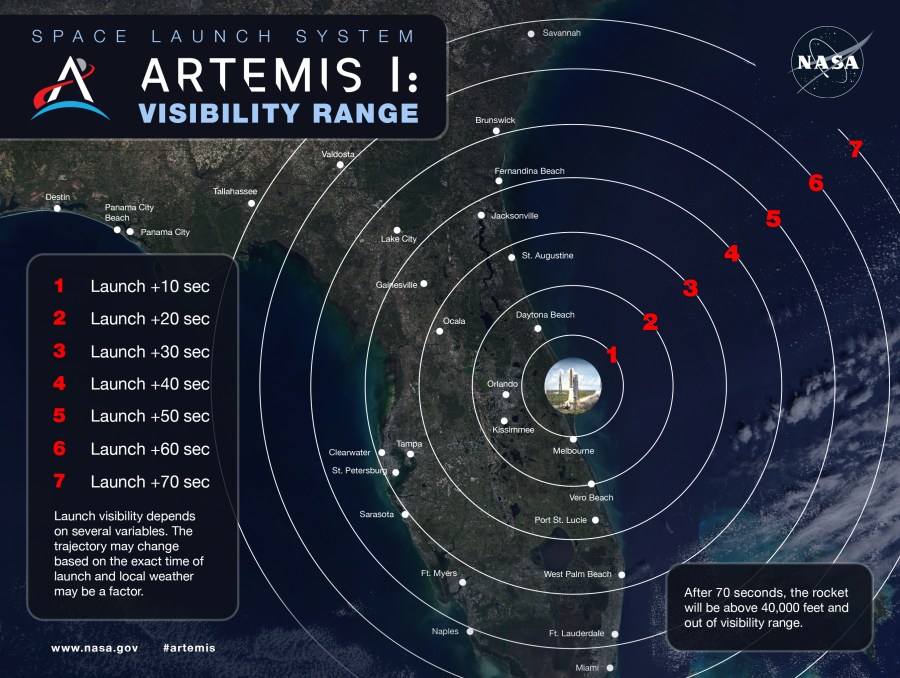TAMPA, Fla. (WFLA) — NASA will make another attempt to launch the Artemis I mission from the Kennedy Space Center early Wednesday morning, more than two months after its last launch attempt was scrubbed.
Artemis I, the first mission in the Artemis program that will send United States astronauts back to the moon and beyond, was given a “go” for launch. The mission’s launch window opens at 1:04 a.m. EST Wednesday and lasts two hours.
The Space Launch System (SLS) rocket and Orion spacecraft are set to liftoff for the uncrewed flight test around the moon from the historic Launch Pad 39B at Kennedy Space Center. And while the launch itself is taking place on the east coast of Florida, NASA says most of the state should be in visibility range for the launch.
According to NASA, many living in Florida and along the east coast should be in viewing range for more than a minute after launch.

“The bright light from the plumes of the Moon rocket’s twin solid rocket boosters and four RS-25 engines could be seen against the dark night sky for up to 70 seconds after liftoff from NASA’s Kennedy Space Center,” the agency said. “The rocket and spacecraft will no longer be visible to the naked eye after reaching an altitude of 42,000 feet.”
That visibility range is, of course, weather permitting. Unfortunately for those in the Tampa Bay area, weather may not be favorable for viewing the launch if it happens on Wednesday morning.
“Clouds will be a challenge for our area to view the Artemis launch. Clouds begin to move into our area after midnight, initially along the Nature Coast, spreading southward and eastward early Wednesday morning,” Max Defender 8 Meteorologist Rebecca Barry said. “The better visibility will be in our southern and inland counties. The cloud cover is expected to be at 67% at 1 a.m., growing to 70% by 2 a.m., and 72% by 3 a.m.”
Preparations for Wednesday morning’s launch attempt got underway Tuesday afternoon when teams started fueling the “mega moon” SLS rocket.
If all goes as planned Wednesday morning, the rocket will launch from Kennedy Space Center and send the Orion spacecraft on a 1.3-million mile test flight around the moon.
The agency made two attempts earlier this year to launch Artemis I, but those attempts were thwarted by leaks. Mission managers eventually decided to roll the SLS rocket back into the vehicle assembly building for repairs.
The 322-foot rocket was rolled back onto the launch pad in September but was later sent back to the VAB as Florida braced for Hurricane Ian. NASA had to press pause on any Artemis I work during Ian to keep its teams safe, but got back to work in October to prepare for November’s launch windows.
The SLS rocket returned to the launch pad on Nov. 4, and stayed on the pad as Hurricane Nicole made its way toward the east coast. The storm caused a brief delay, pushing the launch attempt to Wednesday, but NASA said the rocket did not suffer any major damage from the storm.







